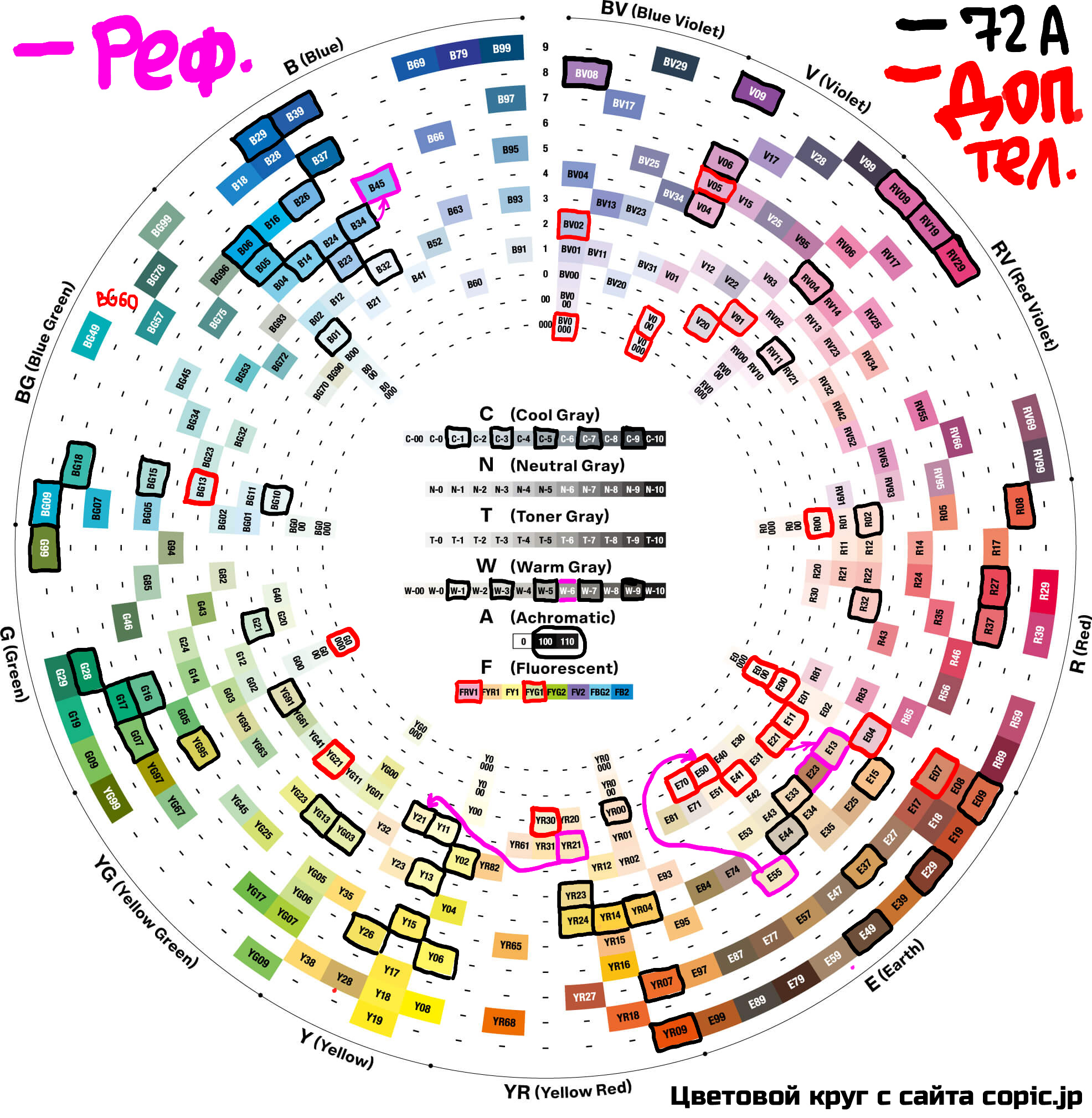I decided to return dried markers into working form, and ordered refillers — universal Copic Various Ink / Copic Ink (~ 9$ on Ebay). The main beauty of Copic markers is their refillability. The marker has run out, you shouldn’t throw it away. You can buy ink. And if the tip of the marker breaks, you can replace it too. Sounds super attractive. Let’s try it in practice.
Today my first refill Copic ink arrived and I marked it pink on the color wheel:

Since some of my shades were not avaliable in Moscow, I took the closest colors. Inks can be mixed to get your colors. Or fill in clearly according to the scheme. In theory, ink of all shades is sold, but it is not so easy to find them in Moscow. Online stores often offer limited shades. And if you buy offline in art stores, the price can be quite high. The shades that I bought in addition turned out to be very beautiful. But I did not manage to fill the markers right away.
All the ink turned out to be different in density — some thicker, others more liquid. The thinnest ink was a lighter shade, with one marker still oozing a little “liquid” as I accidentally added too much ink. Darker shades were also not so easy to refill, since the markers had dried up long ago and were not too willing to absorb the thick ink. After refueling, I put the markers flat on the table. After a couple of hours I checked the result, and it surprised me.
Some markers write well, and some behave unexpectedly. The tips are firm, although damp. They write normally, then they stop writing. It can be seen that there is ink, but it does not seem to completely saturate the tip. I’ve even considered soaking the tip of the brush in rubbing alcohol or hand sanitizer, but I’m not sure if that’s a good idea. I tried dripping ink onto the brush nib — at first it seemed to me that the effect was good. But then the tip became stiff again.
I found on YouTube reviews of artists who had a similar situation. We agreed that more time should be given for the ink absorbtion. Someone dipped the tips in alcohol to soak a little. Those who bought new tips said it didn’t help. Maybe it was the matter of ink type — there are shades that are more “liquid”, and there are more “thick” and sticky ones. You can try shaking the ink bottle better before refueling.
I also noticed an unusual feature — when drawing, the ink glistens on paper and sticks to the hands. Sticky ink and drawing are especially common with darker copic inks. To fix this, I rubbed the inside of the marker and cap with rubbing alcohol, and added a drop of rubbing alcohol to the tip of the brush. If the stickiness persists, you can try to remove the tip from the marker, rinse it and soak it in alcohol. The stickiness can also be associated with the loose fit of the cap, if air enters the marker, the ink dries up and begins to stick.
So far, I have not found a 100% way to remove the stickiness and return the tips to their original state. I will continue to try different options and share the results with you. I can’t wait to try my markers in action. See you soon!